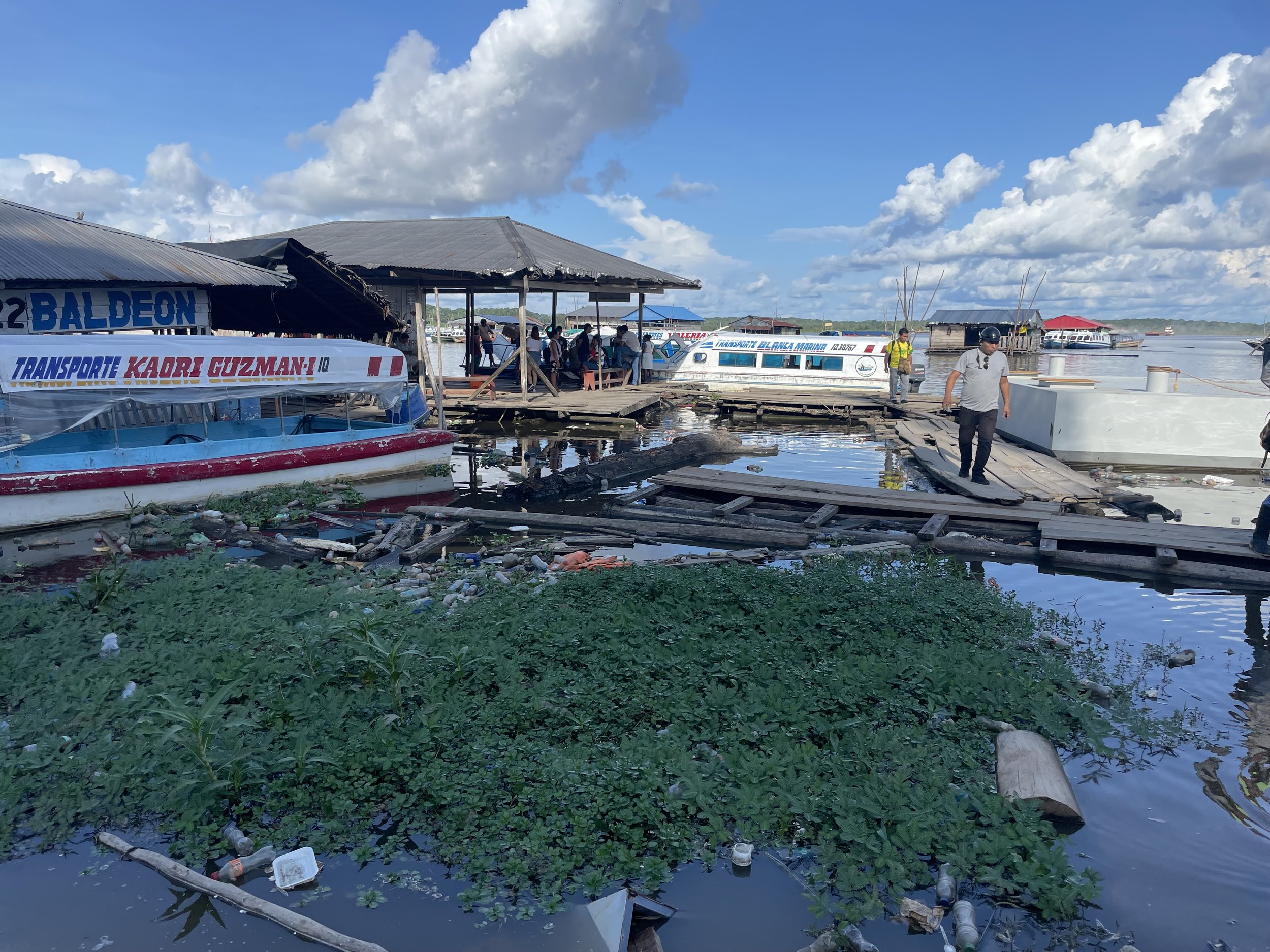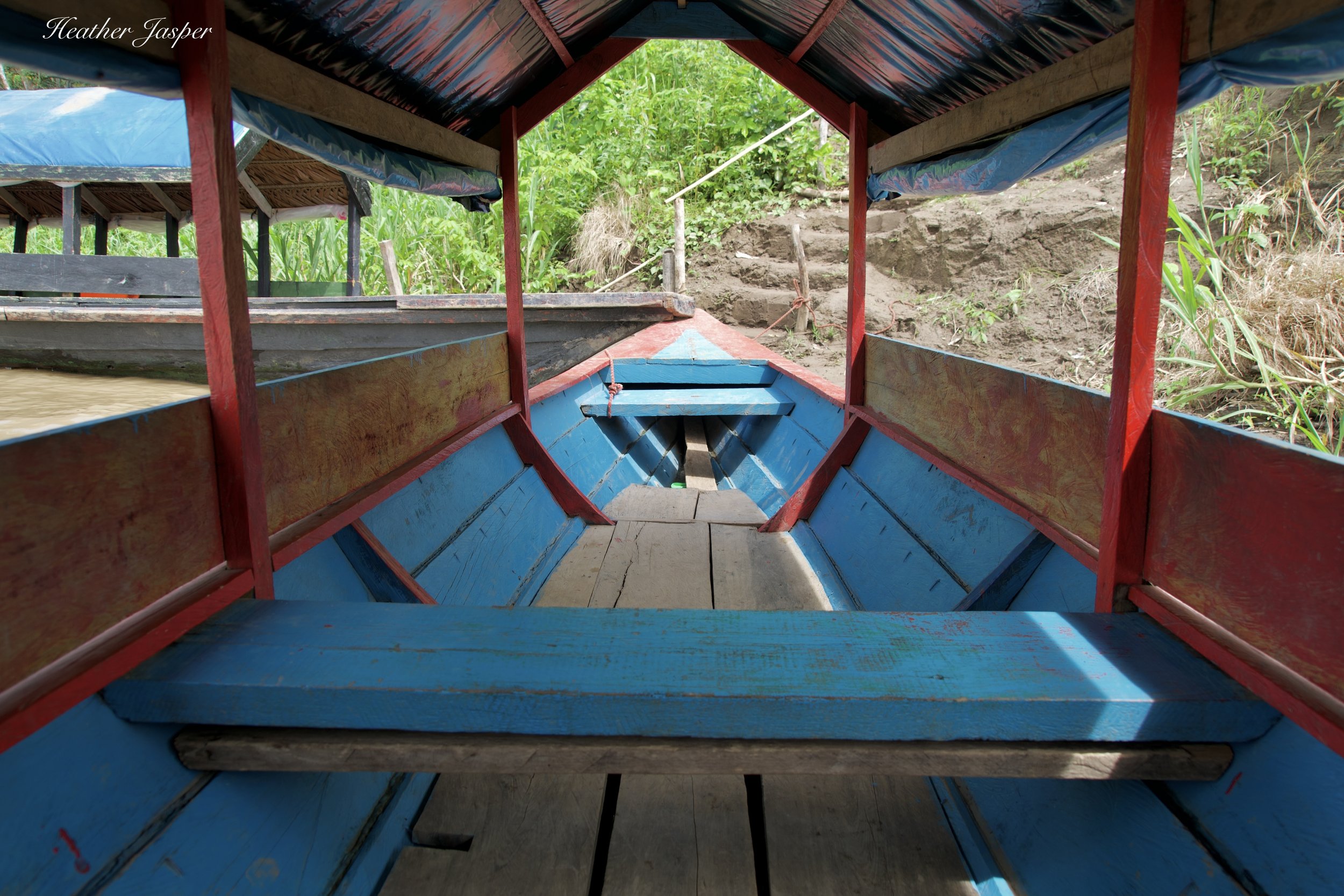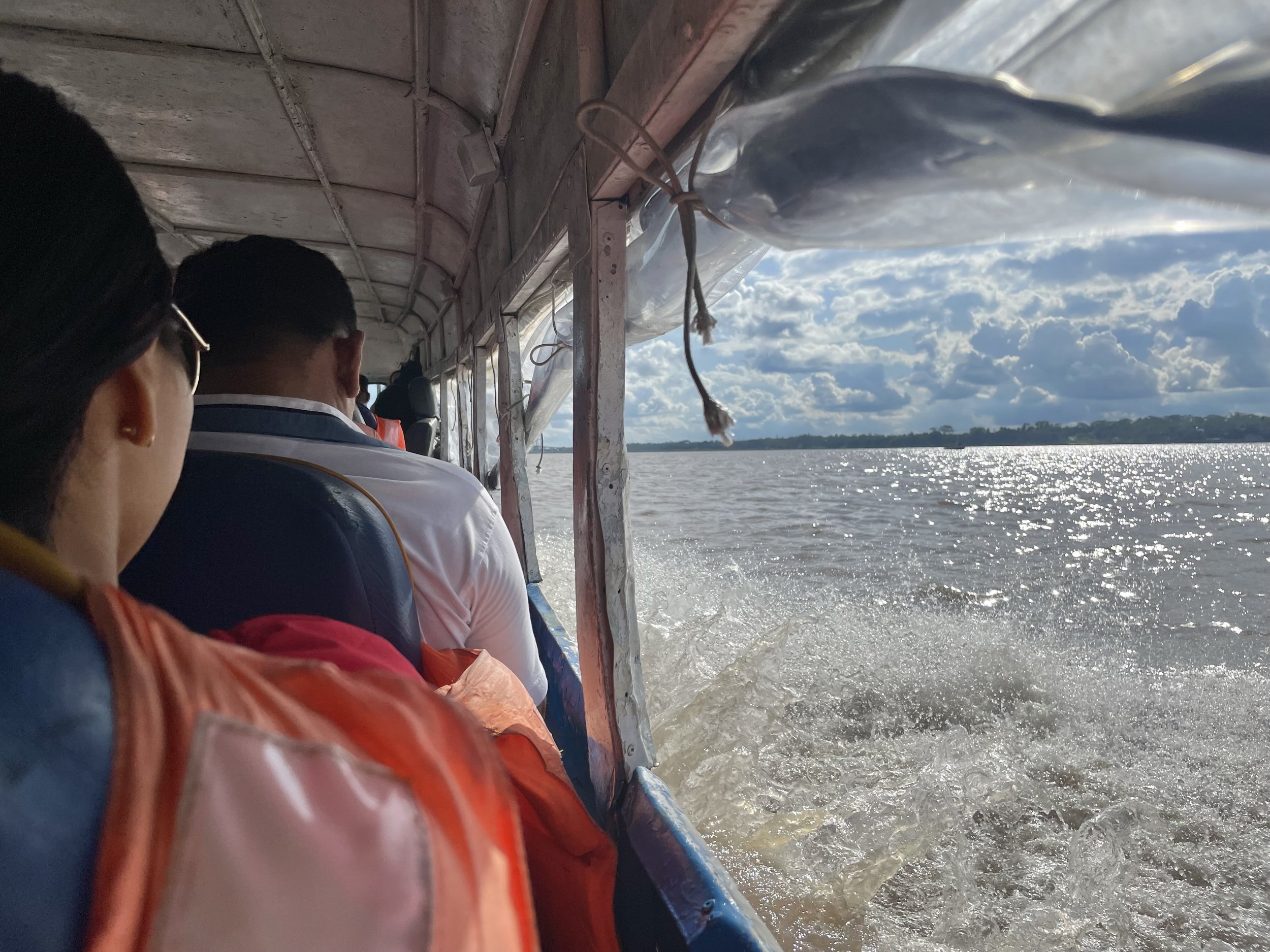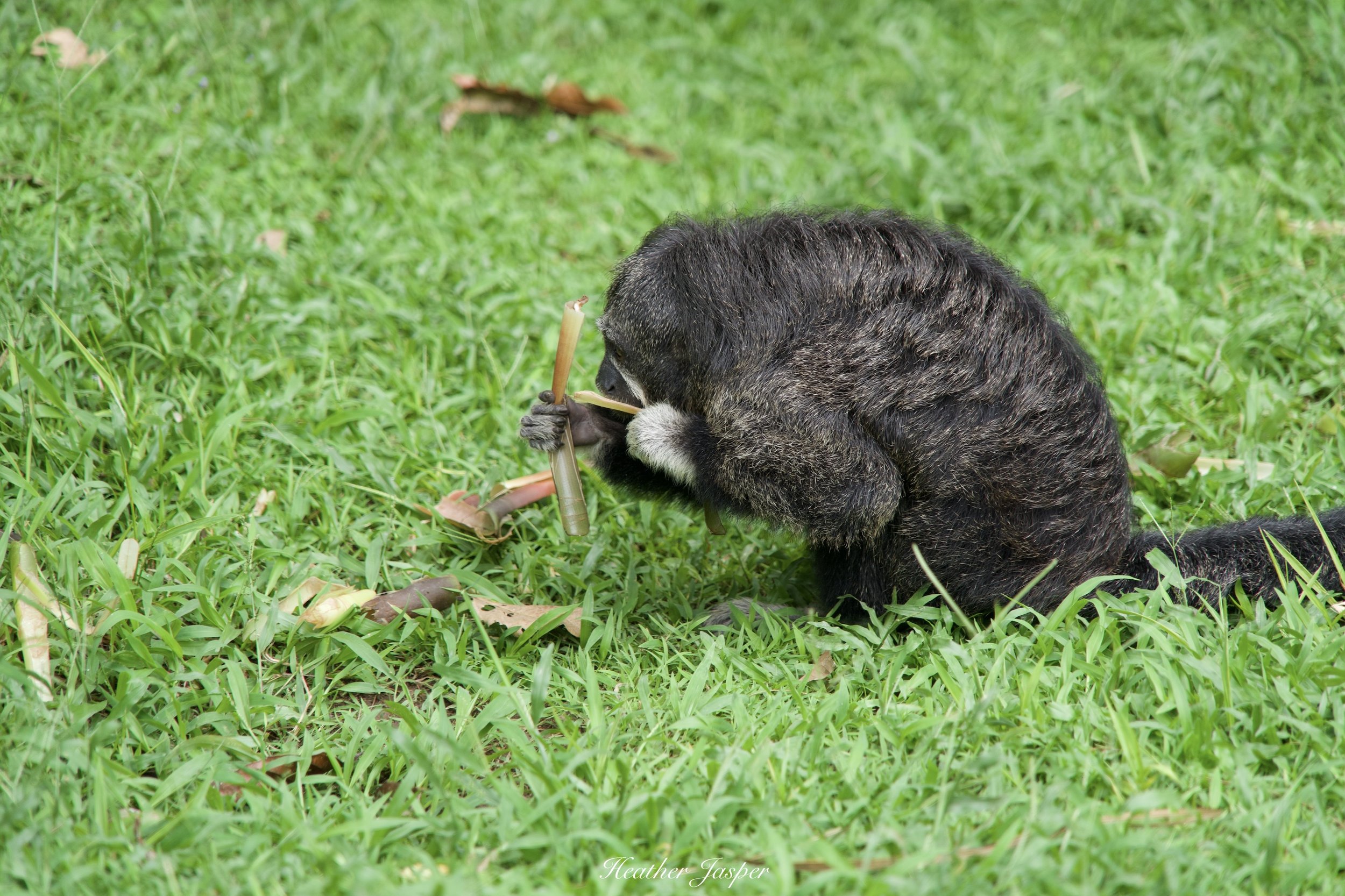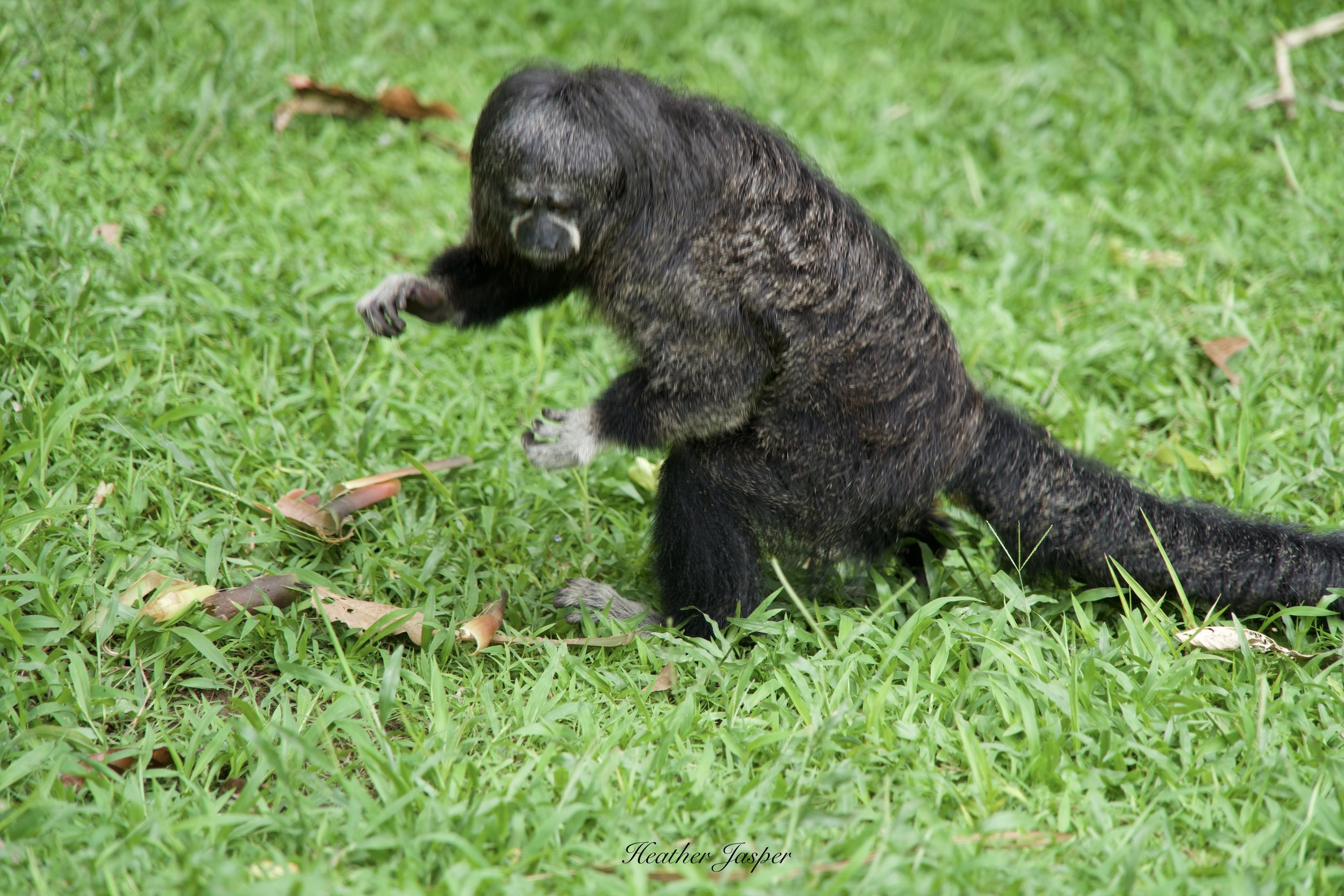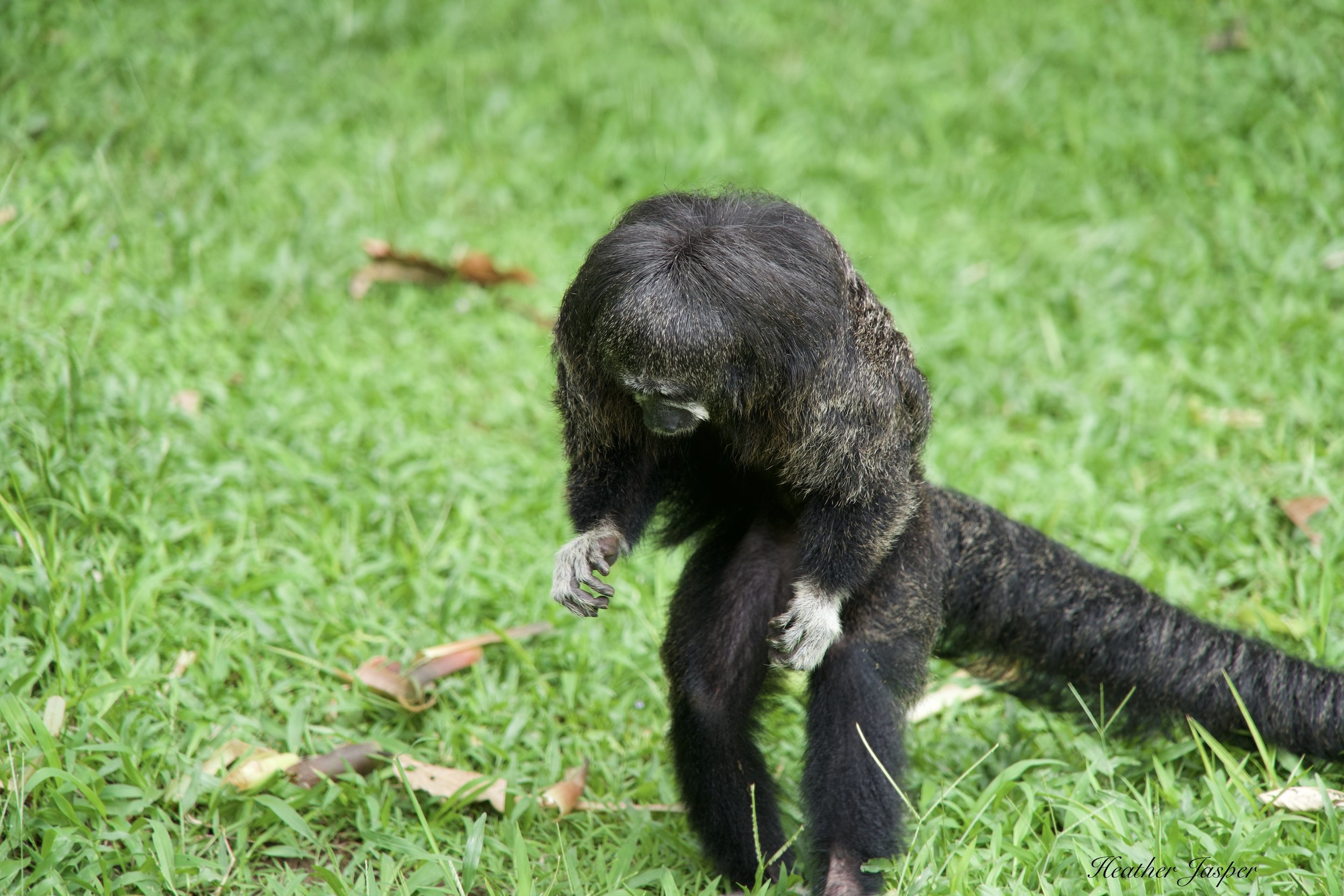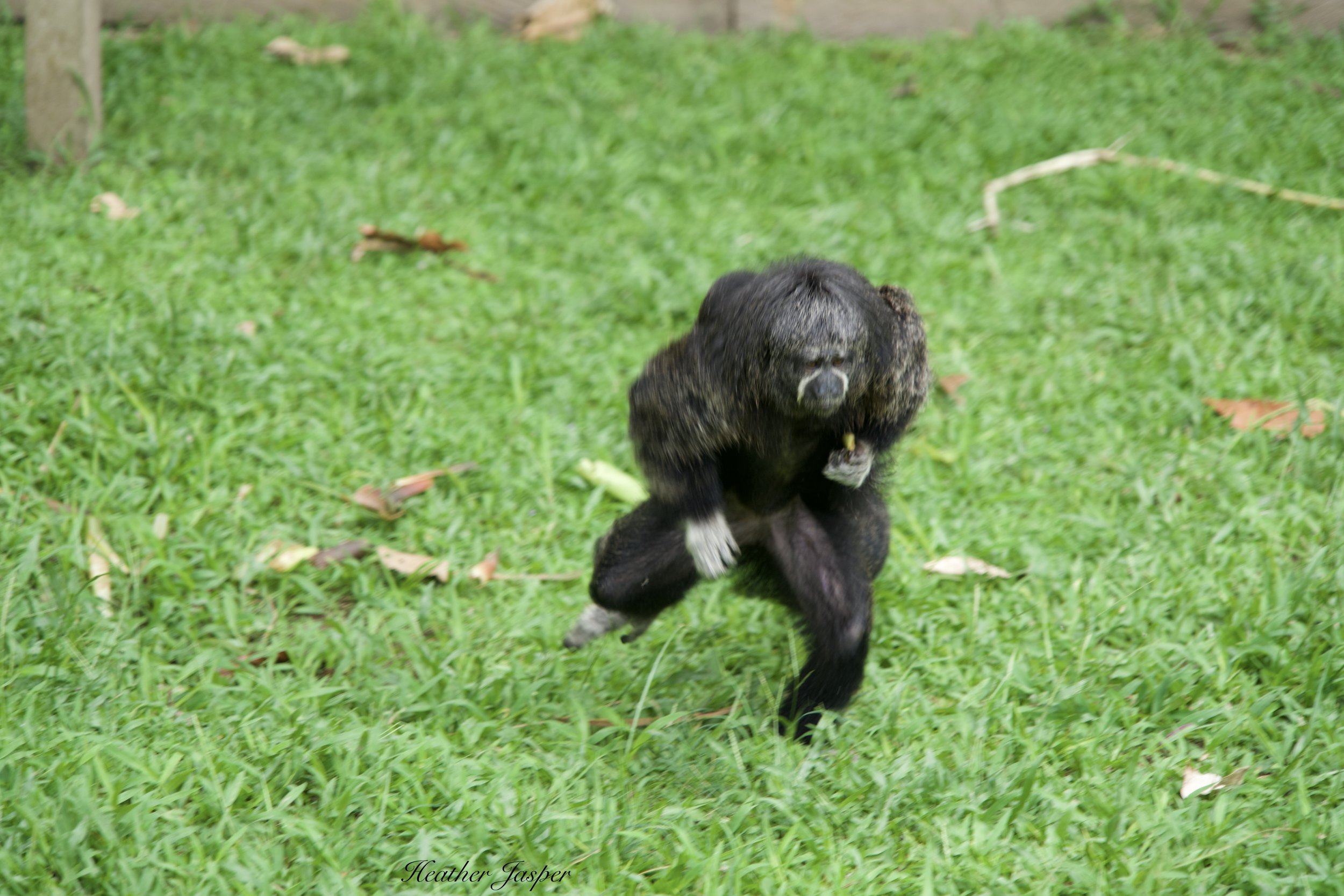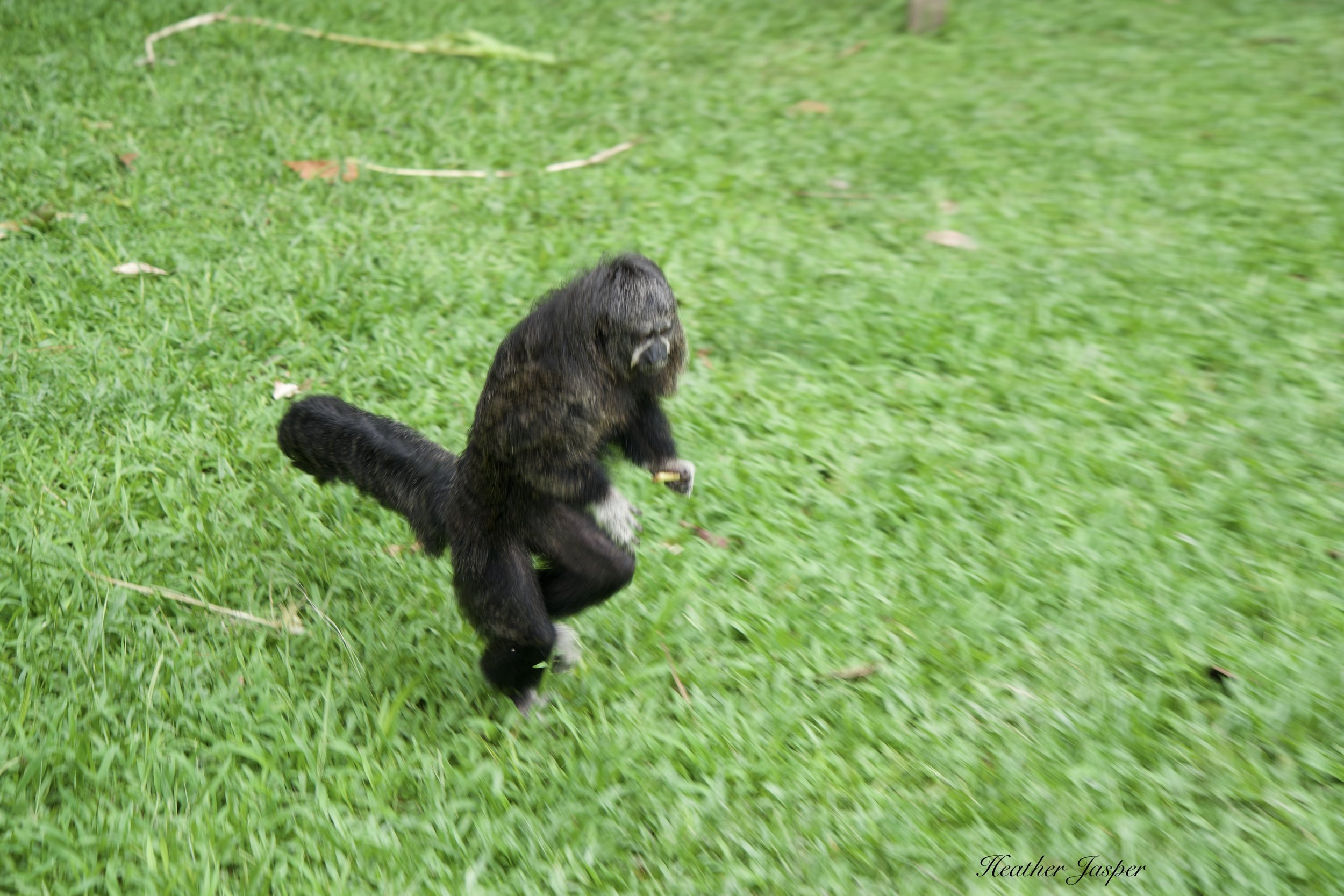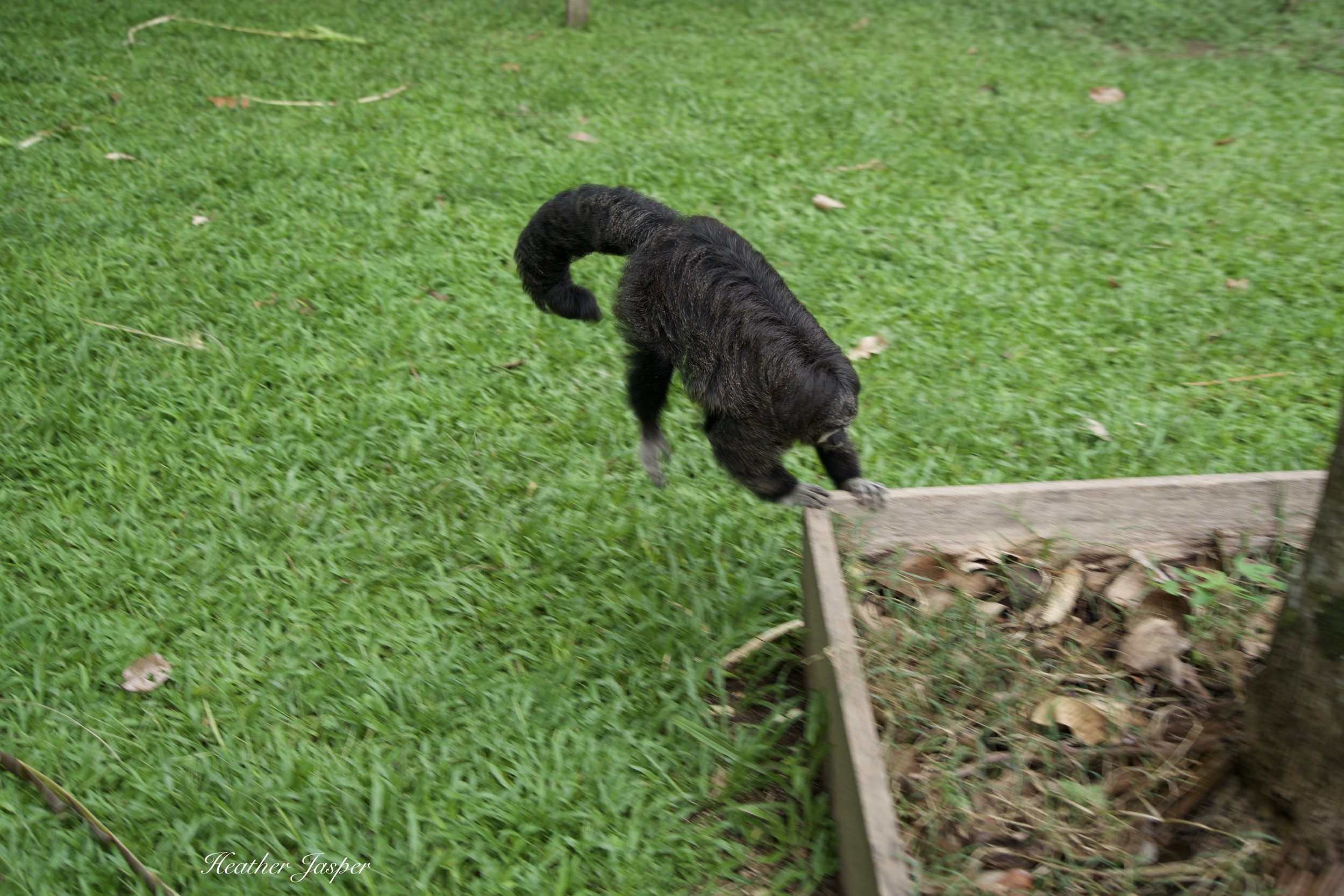Monkey Island
Here’s why you should go to La Isla de Los Monos.
This Saki Monkey was brought to La Isla de Los Monos after she was rescued from the illegal pet trade. Owning any monkey is illegal in Peru and most captured monkeys are exported to North America, Europe & Asia.
Monkeys roam free on an island in the Amazon River.
This is the place to come to see lots of monkeys - up close! The 450 hectares (1,112 acres) island was donated by the Peruvian government in 1997. They have planted over 70 species of fruit trees so the monkeys and other wildlife have plenty to eat.
You can see monkeys in the wild, many of which will come quite close.
Some are not afraid of people because they were brought to the island as orphaned babies and have been raised in part by volunteers and employees at La Isla de Los Monos.
These monkeys will frequently come up to visitors and some want to ride around on your shoulder for a bit. After you’ve been walking around in the heat a while the monkeys can tell you’re sweaty and will try to lick your neck and face for the salt. They’re persistent, so you may need to put monkeys down frequently, as they’ll keep climbing up to sit on your shoulders.
A baby woolly monkey
I arrived thinking that I wouldn’t touch the monkeys because I don’t think people should touch wildlife.
Then this guy climbed up to hang around my neck and all my ethical qualms disappeared. It was impossible to not snuggle the monkeys that ran over to me and climbed up to sit in my arms or on my shoulder.
When you arrive, you’re asked to wash sunscreen and insect repellant off your arms, neck, and face. These chemicals can make the monkeys sick. Ethically, there shouldn’t be any contact between monkeys and visitors, because of how easy it would be for us to make them sick. The monkeys go through a quarantine when they arrive on the island and should only have contact with people who have quarantined also.
Read more about ethical animal tourism on my travel tip newsletter.
Babies on the island
They try to release groups of monkeys before they start breeding, but sometimes you’ll see monkeys on the island carrying newborns, like this Brown Titi monkey father.
The monkeys are free to roam the island as they please.
The only monkeys in cages are ones in quarantine and ones receiving medical care. Some monkeys are also isolated right before release so that they’ll stop interacting with people. So far, over 200 monkeys have been released, which requires a lot of monitoring of safe zones, so they can be sure the monkeys are unlikely to be recaptured after they’re released.
The only Saki monkey
She was rescued as a baby from the pet trade and experts say she’ll do better in the wild with a mate. They’re waiting for a male Saki monkey to be rescued so they can release the pair.
Visiting this non-profit supports their work rehabilitating monkeys rescued from the pet trade.
According to La Isla de Los Monos, “nine out of ten monkeys that are captured and intended to be sold as pets die either during the abduction or sale process. In order to capture the babies, the mothers are killed then the babies must be pulled from the cadavers.”
“In Perú, more than 193 wild species are illegally sold each day, with at least nineteen being primates. Trafficking of wild animals is one of the most profitable criminal industries in the world, along with drugs, weapons, and human trafficking. The money exchanged is estimated to be between 50-150 billion dollars annually.”
Endemic and endangered
This Rio Mayo Titi Monkey is still too young to release. He’ll be cared on the island until he’s an adult and they find a safe place to release him in the Rio Mayo valleys of northern Peru.
You can donate from anywhere!
If you want to support the rescue, rehabilitation and release of wild monkeys, please donate here!
Getting to La Isla de Los Monos
This was a full day, even though the tour was only about an hour. It’s downriver from Iquitos, on an island in the middle of the Amazon River. Whether you go on your own or with a tour agency, the visit is definitely worth your time!
How to get there?
I went by myself, but every tour agency in Iquitos also runs tours there. I don’t know what agencies charge, but detailed below is what it cost me and how long it took. I recommend bringing lunch with you to eat on the boat or while waiting because boats don’t leave until they’re full and there’s nowhere to buy food along the way.
Public transportation
If you go to the Mercado de Productores, all you have to say is that you’re going to La Isla de los Monos. The boats from this dock all pass by the island on the way to a village called Indiana.
9:30 I went to the Mercado de los Productores in Iquitos
10:00 The boat left, after waiting half an hour for the seats to fill.
10:45 Arrived at La Isla de los Monos and paid s/25 for the boat.
11:00 Arrived at the center after walking 15 minutes on a well marked trail.
11:30-12:30 After orientation, I got an hour tour. The price is s/50 for international visitors.
12:45 I waited for others to fill the peque peque boat to leave the island.
1:40 We finally left the island.
2:00 Arrived at a village called Indiana and paid s/20 for the peque peque.
2:30 The seats on the boat finally filled and we left Indiana.
3:30 We arrived at Iquitos and I paid s/20 for the boat.
Total cost: s/65 for transportation, plus the entry fee s/30. (I get the local price with my Peruvian resident card but international visitors pay s/50).











